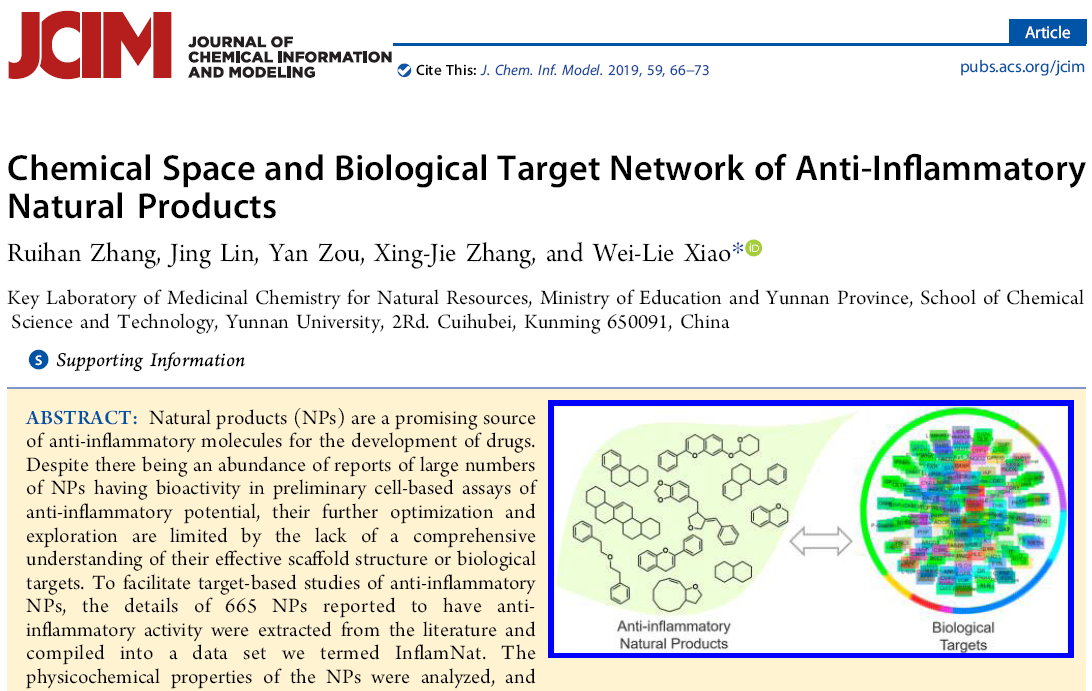Chemical Space and Biological Target Network of Anti-Inflammatory Natural Products
Key Laboratory of Medicinal Chemistry for Natural Resources, Ministry of Education and Yunnan Province, School of Chemical Science and Technology, Yunnan University, 2Rd. Cuihubei,
Kunming
650091
, China
Journal of Chemical Information and Modeling
, 2019, 59 (1), pp 66–73
DOI: 10.1021/acs.jcim.8b00560
Publication Date (Web): December 12, 2018
Abstract
Natural products (NPs) are a promising source of anti-inflammatory molecules for the development of drugs. Despite there being an abundance of reports of large numbers of NPs having bioactivity in preliminary cell-based assays of anti-inflammatory potential, their further optimization and exploration are limited by the lack of a comprehensive understanding of their effective scaffold structure or biological targets. To facilitate target-based studies of anti-inflammatory NPs, the details of 665 NPs reported to have anti-inflammatory activity were extracted from the literature and compiled into a data set we termed InflamNat. The physicochemical properties of the NPs were analyzed, and the distribution of their structures and scaffolds is presented. A compound-target network was constructed from data in the PubChem Bioassay database. The results demonstrated that, compared to natural anticancer compounds in the NPACT database, compounds from the InflamNat data set contained a comparable distribution of compound types but with a higher proportion satisfying Lipinski’s rule. The all-atom structures and scaffold of the compounds were diverse and barely convergent, with flavonoids and triterpenoids being the groups with the greatest abundance. The biological targets of the InflamNat compounds were identified as belonging to a variety of protein families that had varied function. Seventy-two percent of InflamNat compounds involved in the network were identified as having more than one biological target, highlighting the potential for multitarget anti-inflammatory drug development. In conclusion, anti-inflammatory NPs provide a good library for the screening of target-based leads or fragment-based drug design. Thus, elucidation of their biological targets is fundamental for either a specific single-target or multitarget drug development strategy. Meanwhile, a large proportion of the chemical space of anti-inflammatory NPs is still unexplored, with novel active scaffolds remaining to be discovered.
全文链接:https://pubs.acs.org.ccindex.cn/doi/abs/10.1021%2Facs.jcim.8b00560







